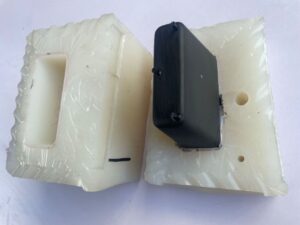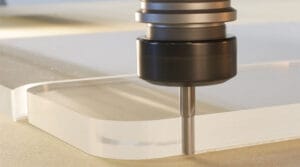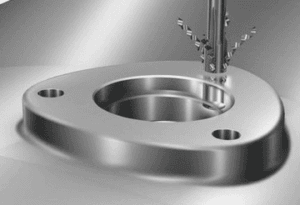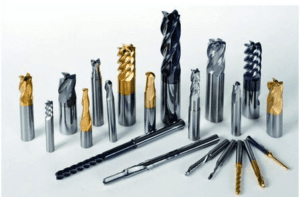Bringing a new product to market is always a challenge, and many factors can cause a launch to fail. Using low-volume manufacturing is a smart way to reduce these risks. This approach involves producing small quantities of parts, rather than the hundreds of thousands or millions typical of high-volume manufacturing. This article will provide a detailed introduction to the low-volume manufacturing process and its techniques. Let’s dive in:
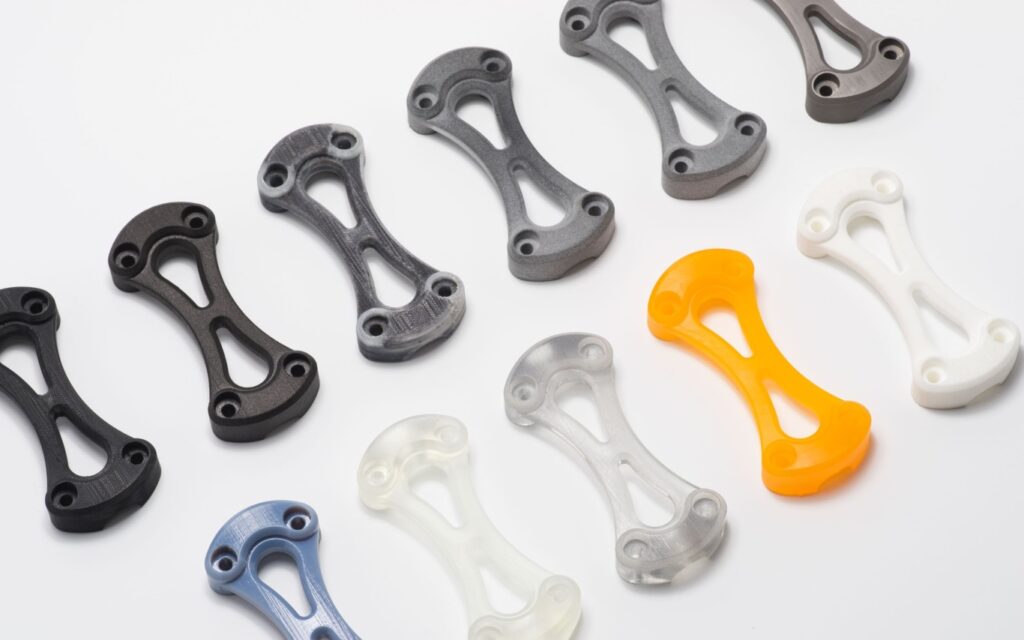
What is Low-volume manufacturing?
Low-volume manufacturing means making a smaller number of parts or products from just a few to several thousand, typically ranging from 10 to 10,000 units, using rapid maufacturing techinqiues like CNC machining, 3D printing, Urethane casting, rapid injection molding and others. This way works well for small batches, prototypes, and custom products. It’s different from high-volume production, where large numbers of identical items are made to keep costs low by spreading them over many units.
When Is Low-Volume Manufacturing Used?
Low-volume manufacturing helps manufactuers reduce risks and develop successful products. Many industries also benefit from the cost-effectiveness, flexibility, and testing options it offers. Here are some situations where low-volume production is useful:
Cost Savings
Mass production can be efficient but requires a large upfront investment in automated equipment, which can be risky. Low-volume manufacturing needs little initial investment, allowing companies to test a product’s popularity before mass production. If demand is low, staying with low-volume production may be more cost-effective.
Market Testing
Low-volume manufacturing is an excellent way to test a new product’s market potential. Companies can launch a limited quantity to gauge consumer interest before investing in high-volume production, reducing the risk of costly overproduction if the product doesn’t perform well.
Product Customization
Many customers want products tailored to their specific needs. High-volume production is often too rigid for customization, but low-volume manufacturing provides the flexibility needed to create custom products that meet unique preferences.
Bridge Manufacturing
Low-volume manufacturing can be used between prototyping and mass production. It lets companies make smaller batches to test products, collect early customer feedback, and ensure everything is ready for full production, minimizing risks before investing in costly tooling for mass production.
Product Innovation
Low-volume manufacturing allows designers to experiment with unique and complex designs that might not be possible in high-volume production. Methods like 3D printing make it easy to create detailed and custom parts without high costs. This approach supports innovation, as companies can test new ideas and refine designs before deciding whether to scale up production.
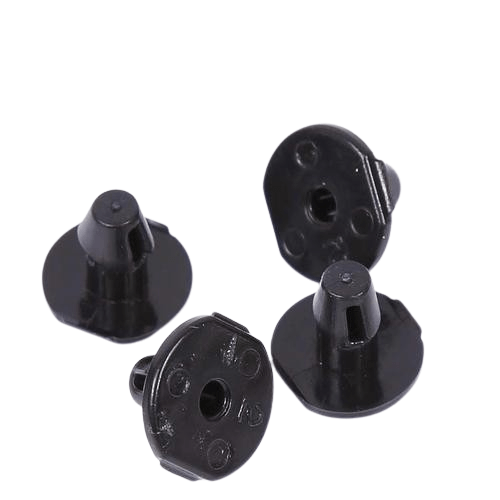
Advantages of low-volume Manufacturing
Low-volume manufacturing makes small batches of products quickly before large-scale production starts. Here are some key benefits:
Quick Response to Customer Feedback
Getting feedback from customers is important for a product’s success. Low-volume manufacturing helps companies gather and respond to feedback quickly. Once the first batch is out, a feedback loop with customers starts. Experts can then use this feedback to fix flaws, adapt to market trends, and find new customer groups.
Reduced Inventory
Low-volume manufacturing doesn’t need as much storage as mass production. Fewer batches mean less need for big warehouses and complex inventory control. With rapid prototyping, companies can respond quickly to changes in demand without extra storage.
Faster Entry to Market
In today’s fast-moving world, being first to market is crucial. Low-volume manufacturing helps companies launch products quickly before competitors copy them, allowing them to reach customers sooner.
Reduced Production Errors/Defects
Large-scale production often uncovers problems that prototypes might miss, such as material shortages or assembly issues. Low-volume manufacturing helps catch these problems early before moving to full-scale production, reducing the risk of costly mistakes.
Flexible Product Design Updates
Product design is always evolving. Low-volume manufacturing allows for easy updates to the design if flaws are found. For example, if feedback on the first batch shows the product is too heavy, designers can switch to lighter materials for the next batch, improving customer satisfaction and product quality.
Better Return on Investment
Mass production needs big investments in equipment, staff, and a steady supply chain. With low-volume manufacturing, companies can use smaller, less costly equipment, adjust resources based on current needs, and boost ROI.
Reduced Production Time
Low-volume manufacturing is generally faster than mass production because it requires fewer steps and less time to complete smaller batches.
Disadvantage of Low-Volume Manufacturing
For businesses needing flexibility and customization rather than bulk, low-volume manufacturing offers key advantages. However, understanding these limitations is essential to decide the best fit for your product’s needs. Here are a few drawbacks:
Higher Unit Costs
In low-volume manufacturing, the cost to make each item is higher because setup, tooling, and production costs are distributed over fewer units. This means that while the overall cost of production is lower than in mass production, the per-unit price can be more expensive. For businesses where price per item is a critical factor, this might make low-volume manufacturing less appealing compared to high-volume options that spread these costs more effectively.
Limited Production Capacity
Low-volume manufacturing is generally not designed to produce large quantities at once. If your business requires thousands of units in a short timeframe, low-volume production might not meet your needs. Its focus is on flexibility and customization rather than speed and high output. So, for large-scale orders or rapid market supply, high-volume manufacturing with its streamlined processes and economies of scale is typically more efficient.
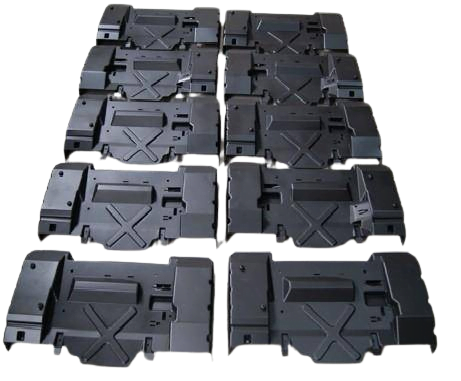
Types of Low-Volume Manufacturing Methods
Low-volume manufacturing uses different technologies to make parts quickly and affordably. Here are some common methods:
Rapid Injection Molding
Rapid Injection molding works well for making small batches of plastic parts with rapid toolings. This method can create production-grade parts that look and feel like the final product, which is great for testing and final use. It’s a good choice for low-volume production when high-quality plastic parts are needed.
Urethane casting
Urethane casting, also known as vacuum casting, involves creating a silicone mold around a master pattern, which is then used to make precise copies. This method is great for parts that need a good surface finish. Once the silicone mold is ready, it can be used to make multiple parts. Urethane casting requires little extra finishing, and the parts made are durable, similar to those made by injection molding. A typical silicone mold can be used 25 to 50 times before it wears out, making it cost-effective for good for low-volume production.
Additive Manufacturing/3D printing
3D printing is a popular choice for low-volume manufacturing. It allows parts to be made without the need for expensive tooling. This method is also flexible, as it doesn’t require a minimum order, helping to save on production and storage costs.
Sheet metal fabrication
For sheet metal parts, Sheet metal fabrication is a good option for low volume manufacturing. it is a process that turns flat sheet metal into products by cutting, bending, welding, and other techniques. It can be used for low-volume and high-volume manufacturing. The sheet metal parts are usually made in low-volume production, which helps eliminate the risk in manufacturing while reducing overall costs.
CNC machining
CNC machining is another great option for low-volume manufacturing for both plastic and metal parts. CNC machines are fast to set up and can make parts with various specifications, either automatically or manually. Automated CNC machines use robots to load materials and remove finished parts, while manual machines need an operator to handle these tasks.
Difference between high-volume and low-volume manufacturing
The difference between high-volume and low-volume manufacturing is mainly the production volume and cost each offers.
Production Volume: Low-volume production usually works for volumes ranging from 10 to 10,000 parts while high-volume production works for over 10,000 parts.
Initial setup time and cost: High-volume manufacturing requires a longer setup time for all kinds of tooling, production lines, and equipment, which means a high investment cost. In contrast, Low-volume manufacturing can save these toolings with a low-cost initial setup and reduced time.
Unit cost: due to the automation of high-volume manufacturing, its unit cost will be very cheap while low-volume manufacturing will have a high unit cost.
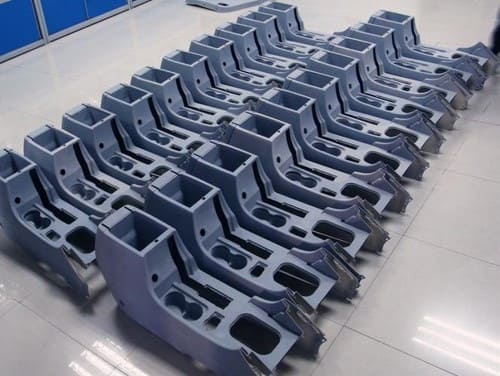
Industry Applications of Low-Volume Manufacturing
Low-volume manufacturing is used across many industries, each taking advantage of its benefits in different ways. Here are some key industries where low-volume manufacturing plays an important role:
Aerospace Industry
In the aerospace industry, low-volume manufacturing is used to produce specialized parts, such as airframe components and complex engine parts. The focus is on using high-quality materials and ensuring precision in manufacturing.
Automotive Industry
In the automotive industry, low-volume manufacturing helps bridge the gap between product development and large-scale production. It is used to test designs and production lines, helping to identify and reduce risks before full-scale production begins.
Consumer Product Industry
The consumer product industry relies on low-volume manufacturing to quickly create and test new products in the market. These parts are used to gather customer feedback and ensure the product meets market needs before moving to large-scale production.
Medical Devices
Medical devices typically do not require large quantities, especially for hospital use. Low-volume manufacturing is a cost-effective way to produce medical devices in smaller batches without the need for mass production.
Industrial Machinery
Low-volume manufacturing is also used in the industrial machinery sector to create specialized machinery or parts with precise specifications. These parts are not mass-produced, making low-volume manufacturing the best option for this type of work.
Get Low-Volume Manufacturing with KUSLA
Low-volume manufacturing is ideal for products with uncertain market demand or when there’s a risk that competitors might quickly copy the product. At KUSLA, we specialize in both prototyping and low-volume manufacturing services to help you reduce project risks. We have expertise in different processes including plastic injection molding, Urethane casting, sheet metal fabrication, and CNC machining. No matter one prototype or 10,000 parts, we can make it for you in a short time.
FAQ
What does low volume mean in business?
It means small quantities of products, small scale of products, Generally from 10 to 10,000 parts.
What is the most popular low-volume manufacturing process?
For plastic parts, urethane casting is the most popular manufacturing process due to the low cost of urethane casted parts. For metal parts, CNC machining is the most popular way for low-volume manufacturing.


